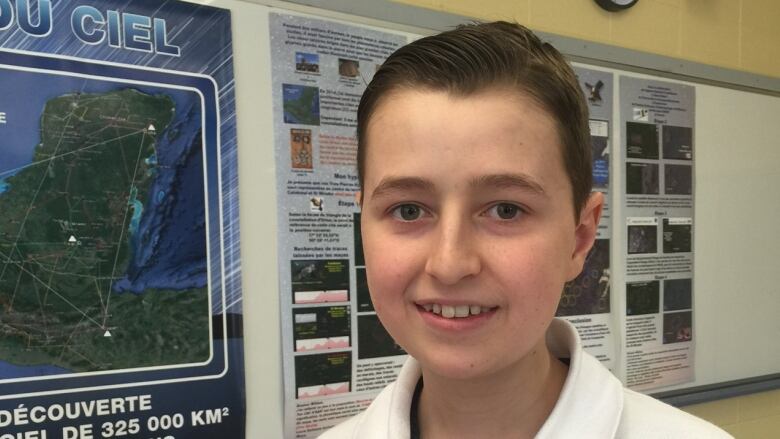Experts question Quebec teen's possible discovery of lost Mayan city
Archaeologist praises William Gadoury, 15, for his efforts, but cautions findings have 'no support'

Archaeologists are raising doubts about findings put forward by a 15-year-old boy from Saint-Jean-de-Matha, Que., who believes hediscovered what could be the ruins of a lost 4,600-year-old city in Mexico.
William Gadoury, a Grade 10 student at Acadmie Antoine-Manseau in Joliette, received widespreadpraise for usingancient star chartsand the positions of known Mayan ruins to locate a possible Mayancity.
He won first place at his school science fairandearned him a trip toan international conference in Quebec City organized by the Canadian Space Agency.
Gadouryused the opportunityto request images captured by the space agency'sRadarsat-2 satellite to helpconfirm his findings.
The story has since been picked up by media outlets around the world, withcoverage inpublications including Popular Mechanics, the New York Daily News and the BBC.
Others, including Wired Magazine, questioned the findings, saying the potential lost city was more likely "an abandoned field."

IvanSprajc, anarcheologist and Mayan expert based inSlovenia, laudedGadouryfor his efforts, butsaid Wednesday the findingshave "no support."
In general, since we know of several environmental facts that conditioned the location of Maya settlements, the idea correlating them with stars is utterly unlikely.- IvanSprajc,archeologist
"In archaeology, we have been using remote sensing for quite some time, and obviously have some experience in recognizing archaeological features in the Maya Lowlands," he wrote on Facebook.
"The rectangle on the published image, supposedly a Maya site, is but an oldmilpaor cultivation plot, abandoned years ago, but definitely not centuries ago."
He added that it's"impossible to check whether there is any correspondence between the stars and the location of Maya cities."
"In general, since we know of several environmental facts that conditioned the location of Maya settlements, the idea correlating them with stars is utterly unlikely," he said.
While there's some doubt about the findings, it appears Gadouryhas a bright future.
The teenager has been invited to provide an article to a scientific journal. He has alsoreceived invitations to the national science fair at McGill University and an international conference in Brazil.













_(720p).jpg)


 OFFICIAL HD MUSIC VIDEO.jpg)
.jpg)



























































































